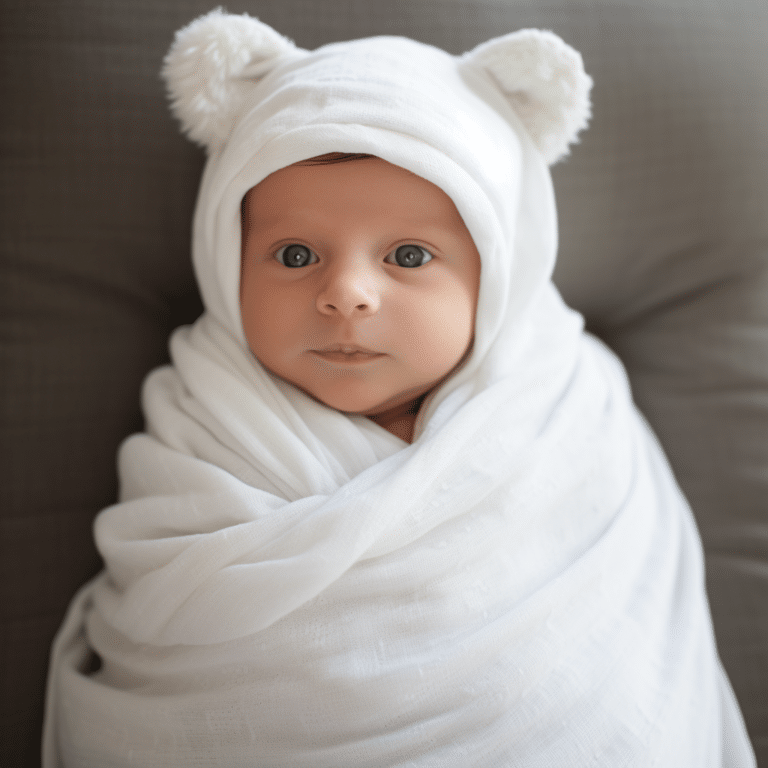Mastering Diaper Changes: Step-by-Step Guide for New Parents
Changing a diaper is a routine task for new parents, but it’s essential to follow the proper steps to ensure your baby stays clean and comfortable. This comprehensive guide will walk you through each step of the process, from gathering the necessary supplies to securely fastening a clean diaper on your little one.
Key Takeaways:
- Gather all the necessary supplies before starting. This includes diapers, wipes, a change of clothes, and diaper cream.
- Always wash your hands before and after changing a diaper to maintain proper hygiene.
- Use a clean, flat surface or a changing table to create a safe and clean area for diaper changing.
- Properly clean the diaper area by using wipes or a damp cloth, wiping from front to back for girls.
- Allow the diaper area to air dry before putting on a clean diaper to prevent diaper rash.
Now that you have a basic overview, let’s dive into the step-by-step process of changing a diaper to ensure you have all the information you need.
Gather the Necessary Supplies

Before you begin changing a diaper, make sure to gather all the necessary supplies within arm’s reach to keep your baby safe and secure. Having everything you need readily available will help streamline the process and prevent any accidents or discomfort for your little one.
Here is a checklist of essential items you should have on hand:
- Diapers: Choose the appropriate size for your baby and have several clean ones within reach.
- Wipes: Use gentle, unscented wipes to clean your baby’s skin during diaper changes.
- Diaper cream: Apply a thin layer of diaper cream to protect your baby’s delicate skin from irritation.
- Change of clothes: Keep spare clothes nearby in case the current outfit gets soiled.
- Disposable bags: Have small bags on hand to dispose of dirty diapers hygienically.
- Changing mat or pad: Use a clean, soft surface to lay your baby down during diaper changes.
- Hand sanitizer: Ensure good hand hygiene by using a hand sanitizer before and after diaper changes.
By having these supplies organized and easily accessible, you can ensure a smooth and efficient diaper-changing experience for both you and your baby.
Prepare a Clean Surface
To ensure a hygienic diaper change, prepare a clean and comfortable surface where you can lay your baby safely. It is recommended to have a designated changing table, but any clean, flat surface will work. Use a waterproof changing pad or a towel to protect the surface and provide extra comfort for your little one. Have all the necessary supplies within arm’s reach, including diapers, wipes, a change of clothes, and diaper cream. This way, you won’t have to leave your baby unattended during the diaper-changing process.
To create a clean environment, wipe down the changing surface with a mild soap solution or baby-safe disinfectant. Ensure that it is dry before placing your baby on it. A clean surface plays a crucial role in maintaining good hygiene and preventing the spread of germs. Regularly disinfect the changing table or surface to ensure ongoing cleanliness.
| Supplies for Diaper Change | Additional Notes |
|---|---|
| Diapers | Choose the appropriate size for your baby’s weight. |
| Wipes | Opt for fragrance-free and hypoallergenic wipes to minimize skin irritation. |
| Change of Clothes | Have a spare outfit ready in case of accidents or leaks. |
| Diaper Cream | Apply a thin layer of diaper cream as a protective barrier, especially if your baby’s skin is prone to irritation. |
By taking the time to create a clean and comfortable diaper-changing area, you can ensure that the process is safe, sanitary, and stress-free for both you and your baby.
Wash Your Hands
Before you begin changing a diaper, it’s crucial to wash your hands thoroughly with soap and water to maintain cleanliness and prevent the spread of bacteria. This is an essential step in following diaper changing best practices. Proper hand hygiene is of utmost importance, as it helps protect both the baby and the person changing the diaper from potential infections.
Step 1: Wet Your Hands
Start by wetting your hands under clean running water. Ensure that the water is at a comfortable temperature before proceeding. Avoid using hot water, as it can cause skin irritation.
Step 2: Apply Soap
Next, apply enough soap to cover all surfaces of your hands. Lather the soap by rubbing your hands together, paying attention to the areas between your fingers, the back of your hands, and under your nails. This will help remove dirt, germs, and any other contaminants.
Step 3: Scrub for 20 Seconds
Continue scrubbing your hands for at least 20 seconds. Singing the “Happy Birthday” song twice can be a helpful timer. Focus on thoroughly cleaning each finger, the palms, and the wrists to ensure a comprehensive cleanse.
Step 4: Rinse and Dry
Rinse your hands well under running water, making sure to remove all traces of soap. Then, dry your hands using a clean towel or an air dryer. Avoid using shared towels that may harbor bacteria.
By following these simple steps, you can ensure that your hands are clean and ready for the diaper-changing process. Remember to wash your hands both before and after changing diapers, as this will help maintain proper hygiene standards and keep your little one safe and healthy.
Remove the Dirty Diaper
Once you have the necessary supplies ready and your hands are clean, carefully unfasten the dirty diaper and lift your baby’s legs to remove it. Always remember to handle your baby with care and support their head and neck during this process.
Use the opportunity to check your baby’s skin for any signs of redness, irritation, or diaper rash. If you notice any concerns, make a note of them and consult with your pediatrician if necessary.
Remember to keep the clean diaper nearby and within reach, as you do not want to leave your baby unattended on the changing surface. This ensures their safety and minimizes any potential accidents.
There are different types of diapers available in the market, such as disposable diapers and cloth diapers. Depending on your preference and what works best for your baby, choose the type that suits your needs. Disposable diapers are convenient for quick changes and easy disposal, while cloth diapers are environmentally friendly and cost-effective in the long run.
| Disposable Diapers | Cloth Diapers |
|---|---|
| Convenient and easy to use | Environmentally friendly |
| Available in various sizes and absorbency levels | Cost-effective in the long run |
| Quick disposal | Requires regular washing and maintenance |
Regardless of the type of diaper you choose, ensure that it fits your baby comfortably and snugly. A well-fitting diaper should have the waistband slightly below their belly button and the leg cuffs forming a gentle seal around their thighs to prevent leaks.
Removing the dirty diaper promptly is important to maintain your baby’s hygiene and prevent discomfort or irritation. By following these step-by-step instructions, you can change your baby’s diaper confidently and efficiently, ensuring their comfort and cleanliness.
Clean the Diaper Area
After removing the dirty diaper, gently clean your baby’s diaper area using wipes or a damp cloth, ensuring proper hygiene and preventing any potential infections. It’s important to be thorough in cleaning every crevice to keep your baby comfortable and free from irritation. Remember to always wipe from front to back for girls to prevent the spread of bacteria.
To maintain cleanliness, you can use a wipe warmer to keep the wipes at a comfortable temperature. This can help prevent your baby from getting startled by the cold sensation of the wipes. Additionally, using fragrance-free wipes can be beneficial as some babies may have sensitive skin that can react to perfumes or chemicals.
If you prefer using a damp cloth instead of wipes, make sure to have a bowl of warm water nearby and change the water frequently to avoid spreading germs. Gently pat the area dry with a soft towel or allow it to air dry before putting on a clean diaper. Remember to handle your baby’s diaper area with care and avoid excessive rubbing or irritation.
| Diaper Changing Tips: |
|---|
| Always wash your hands before and after changing a diaper to prevent the spread of germs. |
| Use gentle, fragrance-free products to minimize the risk of skin irritation. |
| Keep the diaper area clean and dry to prevent diaper rash and other skin issues. |
| Apply a diaper cream or ointment, if necessary, to provide a protective barrier against moisture and irritation. |
| Dispose of the dirty diaper properly in a sealed bag or diaper pail to control odors. |
Remember, changing diapers may seem overwhelming at first, but with practice, it will become a routine and natural part of caring for your baby. Following proper diaper changing steps and maintaining good hygiene will help keep your baby healthy, comfortable, and happy.
Allow the Area to Air Dry
Once the diaper area is clean, give it some time to air dry before proceeding to put on a fresh diaper, as this promotes better skin health for your baby. Allowing the skin to breathe and dry naturally helps prevent moisture build-up, reducing the risk of diaper rash. You can gently pat the area with a soft towel or let it air dry without wiping. Avoid rubbing the skin, as this may cause irritation.
In the meantime, you can engage with your baby by singing a song, playing a gentle game, or simply talking to them. This not only keeps them entertained but also creates a bond between you and your little one. Remember to supervise your baby during this time to ensure their safety.
While waiting for the diaper area to dry, it’s a good opportunity to check if any additional supplies are needed, such as a fresh set of clothes or a new diaper. Having everything prepared and within reach saves time and helps maintain a smooth diaper-changing routine.
| Tip: | During warmer months or in a well-ventilated area, you can let your baby go diaper-free for a short period. This allows the skin to breathe and reduces the risk of diaper rash. Just make sure to place a waterproof mat or towel underneath them to protect the surface. |
|---|
Remember, each baby is unique, and their skin may have different sensitivities. Always monitor your baby’s skin for any signs of irritation or redness. If you notice any discomfort or persistent diaper rash, consult your pediatrician for further guidance. With proper care and attention, you can keep your baby’s skin healthy and comfortable.
Secure a Clean Diaper
Carefully place a clean diaper under your baby and securely fasten it, ensuring a snug fit that keeps your baby dry and comfortable. To do this, follow these simple instructions:
- Open the clean diaper and position it underneath your baby, making sure the back of the diaper aligns with the baby’s waistline.
- With one hand, hold the diaper against your baby’s tummy to keep it in place.
- Using your other hand, gently bring the front of the diaper up between your baby’s legs.
- Secure the diaper by fastening the tabs on both sides. Make sure they are snug but not too tight to allow for comfortable movement. The tabs should be attached to the front of the diaper, ensuring it stays in place.
Remember to double-check that there are no gaps around your baby’s legs or waist to prevent leaks. Additionally, avoid putting the diaper on too tightly as it may cause discomfort. Finding the right balance between a secure fit and your baby’s comfort is essential.
If you are using cloth diapers, secure them with the appropriate fasteners or snaps, ensuring a snug and comfortable fit. Adjust the diaper as needed to provide maximum absorbency and prevent leaks.
| Diapering Tips: |
|---|
| Make sure the diaper is positioned high enough in the back to cover your baby’s bottom completely. |
| Check for any bunching or folding of the diaper, which may indicate an improper fit. |
| When fastening the tabs, press them firmly against the diaper to ensure a secure hold. |
| Always keep an eye on your baby during diaper changes to prevent accidents or injuries. |
By following these diaper changing instructions and best practices, you can ensure that your baby remains clean, dry, and comfortable throughout the day.
Addressing Common Diaper Issues
Diaper-changing routines also involve addressing common issues like diaper rash. By following preventive measures and using suitable products, you can keep your baby’s skin healthy and free from discomfort. Diaper rash, characterized by redness and irritation in the diaper area, can be caused by a variety of factors, including prolonged exposure to a wet or dirty diaper, sensitive skin, or a yeast infection.
To prevent diaper rash, it’s important to keep the diaper area clean and dry. Change your baby’s diaper frequently to avoid prolonged contact with urine or feces. Gently clean the diaper area with wipes or a damp cloth, ensuring to wipe from front to back for girls to prevent the spread of bacteria. Pat the area dry or allow it to air dry to minimize moisture, as well as applying a thin layer of diaper cream to act as a barrier between the skin and moisture.
If your baby develops diaper rash, there are several steps you can take to alleviate discomfort and promote healing. Firstly, continue to change diapers frequently and use gentle cleansing methods to keep the area clean. Avoid using wipes with alcohol or fragrance, as they may further irritate the skin. Apply a generous amount of diaper cream containing zinc oxide or petroleum jelly, which can help protect the skin and reduce inflammation. Additionally, allow your baby to have some diaper-free time to let the area breathe, promoting healing and preventing moisture buildup.
If the diaper rash persists or worsens, it’s important to consult your pediatrician. They can provide further guidance and recommend suitable treatments, such as antifungal creams for yeast infections. Remember, every baby’s skin is different, so finding the right approach to prevent and treat diaper rash may require some trial and error. With patience and proper care, you can keep your baby’s skin healthy and comfortable during diaper changes.
Preventing and Treating Diaper Rash: A Quick Guide
| Preventive Measures | Treatment Options |
|---|---|
|
|
Practice Makes Perfect

Changing diapers may initially seem challenging, but with practice, it will become an effortless task that you can perform to keep your baby happy and dry. As you become more familiar with the steps involved in diaper changing, you will develop a routine that suits you and your baby’s needs.
One way to practice changing diapers is by using a doll or stuffed animal. You can simulate the process by going through the motions of gathering supplies, laying the doll on a clean surface, and going step by step through the diaper-changing process. This will help you build confidence and become more comfortable handling a real baby.
Remember to take your time and approach each diaper change with patience. Your baby may squirm or become fussy, but staying calm and gentle will make the process smoother for both of you. Use this time to bond with your baby by talking or singing softly, creating a positive and nurturing environment.
| Practice Tips | Benefits |
|---|---|
|
|
“Diaper changing may feel daunting at first, but remember that you are not alone. Seek support from other parents or attend baby care workshops to learn tips and tricks from experienced caregivers. Every diaper change is an opportunity for you to provide love and care for your little one.”
With time, patience, and practice, changing diapers will become second nature for parents. It’s an essential skill that helps keep your baby clean, comfortable, and healthy. So don’t be discouraged by the initial challenges, embrace the learning process, and soon you’ll be a diaper-changing pro.
Conclusion
Mastering the proper diaper-changing steps is essential for keeping your baby clean, comfortable, and happy. By following the guidelines provided, you’ll become confident in your diaper-changing abilities and ensure your little one’s well-being.
Changing a diaper is a common task for new parents, but it can initially seem daunting. However, with practice and the right knowledge, it will become second nature. Gather all the necessary supplies, including diapers, wipes, a change of clothes, and diaper cream, ensuring they are within arm’s reach. This will prevent the need to leave your baby unattended during the process.
To change a diaper, start by washing your hands thoroughly. Lay your baby on a clean surface, either a changing table or a flat, padded area. Unfasten the dirty diaper and carefully lift your baby’s legs to remove it. Use wipes or a damp cloth to clean the diaper area, making sure to wipe from front to back for girls.
Allow the diaper area to air dry before placing a clean diaper under your baby and fastening it securely. Dispose of the soiled diaper properly and wash your hands again. It’s important to be aware of common diaper issues, such as diaper rash, and use appropriate creams or ointments when necessary.
FAQ
Q: What supplies do I need for changing a diaper?
A: You will need diapers, wipes, a change of clothes, and diaper cream.
Q: What should I do before changing a diaper?
A: Start by washing your hands and laying the baby on a clean surface.
Q: How do I remove a dirty diaper?
A: Unfasten the dirty diaper and lift the baby’s legs to remove it.
Q: How do I clean the diaper area?
A: Use wipes or a damp cloth to clean the diaper area, wiping from front to back for girls.
Q: Why is it important to let the diaper area air dry?
A: Allowing the area to air dry helps prevent diaper rash and keeps the baby’s skin healthy.
Q: How do I secure a clean diaper?
A: Place a clean diaper under the baby and fasten it securely, ensuring proper positioning and fit.
Q: What should I do if my baby experiences diaper rash?
A: Use appropriate creams or ointments to treat diaper rash and prevent further irritation.
Q: Will changing diapers become easier with practice?
A: Yes, with practice, changing diapers will become second nature for parents.






